![[Orion Complex]](orion.jpg)
| Astrophotos | JSP Homepage |
The 3 diagonal stars in the center represent the Hunter's belt and Zeta is the left most star.
The 3 stars below the belt represent his sword and the middle one is surrounded by the Great Nebula.
![[Orion Complex]](orion.jpg)
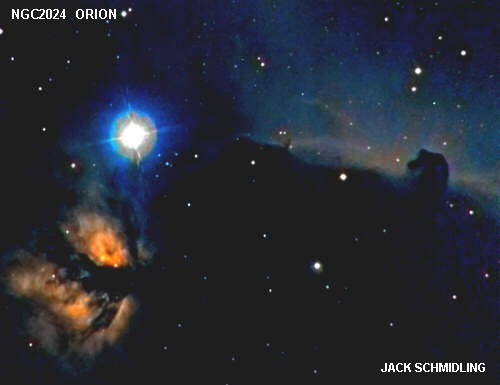
This image was taken in hydrogen alpha light with green and blue filters supplying the other colors. It was taken with the 4.25" Astrograph.

The Horse Head
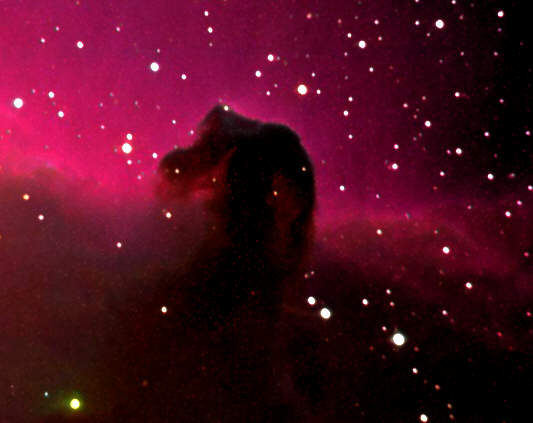
The Horse Head
Unfortunately, the Horsehead is virtually impossible to see in even very large telescopes because of the weakness of the background nebulosity and the dazzling brightness of very close Zeta. This most interesting object had to wait for the invention of photography to become the most famous "dark nebula" in the sky.
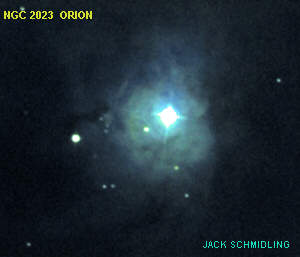
It is one of the brightest sources of fluorescent molecular hydrogen in the sky. That sounds like a contradiction in terms as reflection nebulae typically reflect light as opposed to emit light as in emission nebulae. There is a very good article describing this object and phenomenon at:
![[M42color]](m42c.jpg)
Scope: 10"
EFL: 60"
Exposure: 40 min
Film: PPF 400

This is a higher resolution image of an interesting feature in the nebula which I have named the "Pitcher Plant".
It was a 10 exposure with the MX5C.
Although the Trapezium is much discussed and pointed to in photographs, it is rarely visible in those photos because they are usually taken to wow us with the grandeur of the Orion Nebula. In order to see the trapezium in photos, the exposures must be very short and taken with very long focal lengths.
This series of images will take you from a large scale view which makes visible the so-called Huyghenian Region containing the Trapezium. This is roughly a rectangle with a dark bay just below Theta Orionis. Following this is a series of progressively higher resolution images and an identification chart.

A short exposure to allow the Huyghenian Region to be seen. Theta is the bright blob just above the dark bay entering from the lower right.
This photo was a 10 min exposure at
prime focus of the 10" Newt.
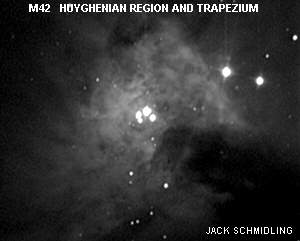
This view is a CCD image which brings out the Huyghenian Region without losing the 4 stars of the Trapezium.
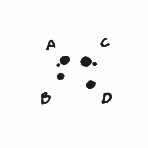
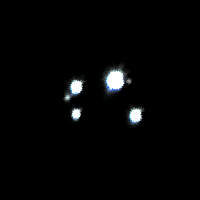
This was a 2 second exposure with the MX5 CCD camera and is at an EFL of 25 feet through the 16" telescope.